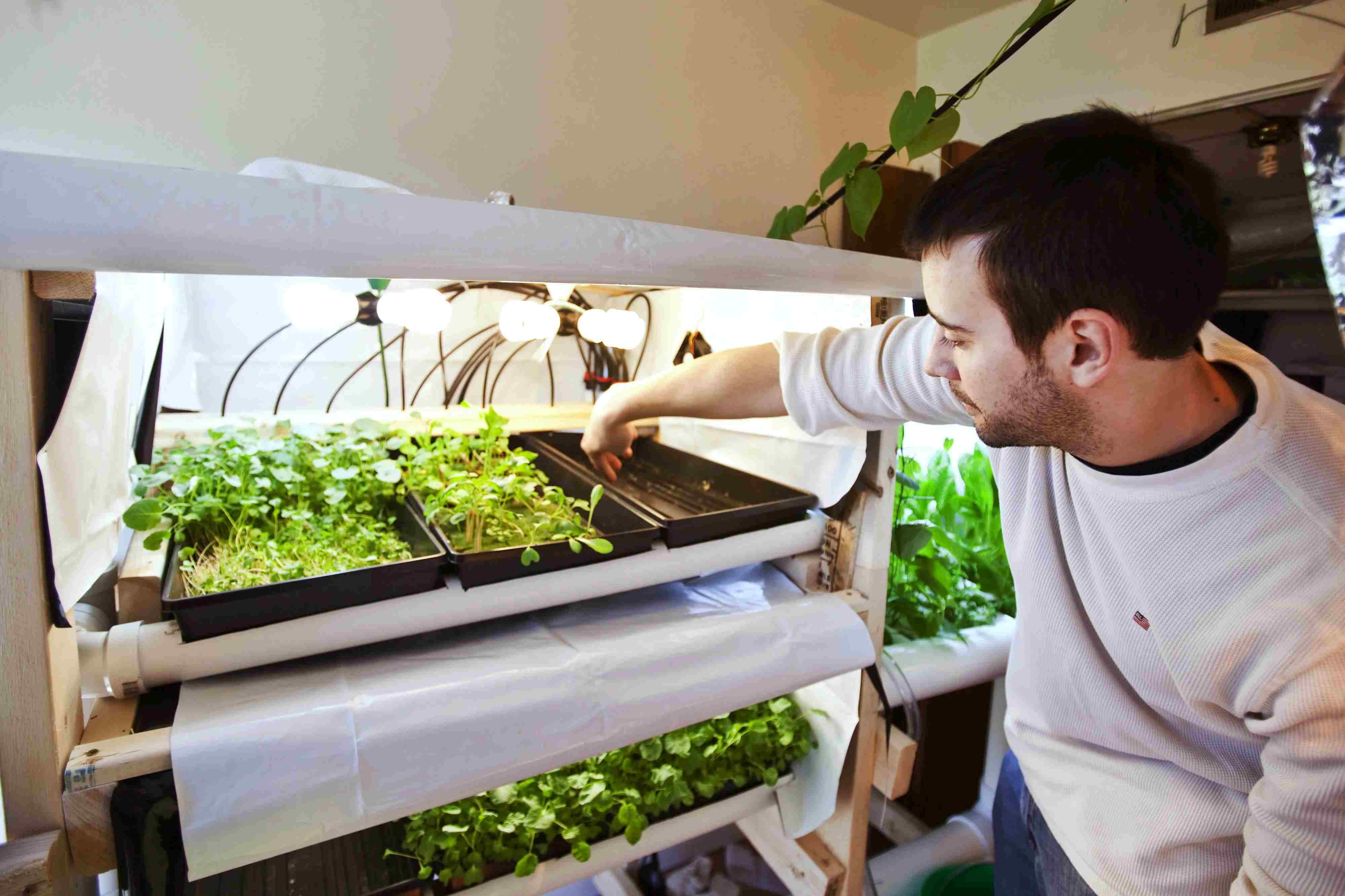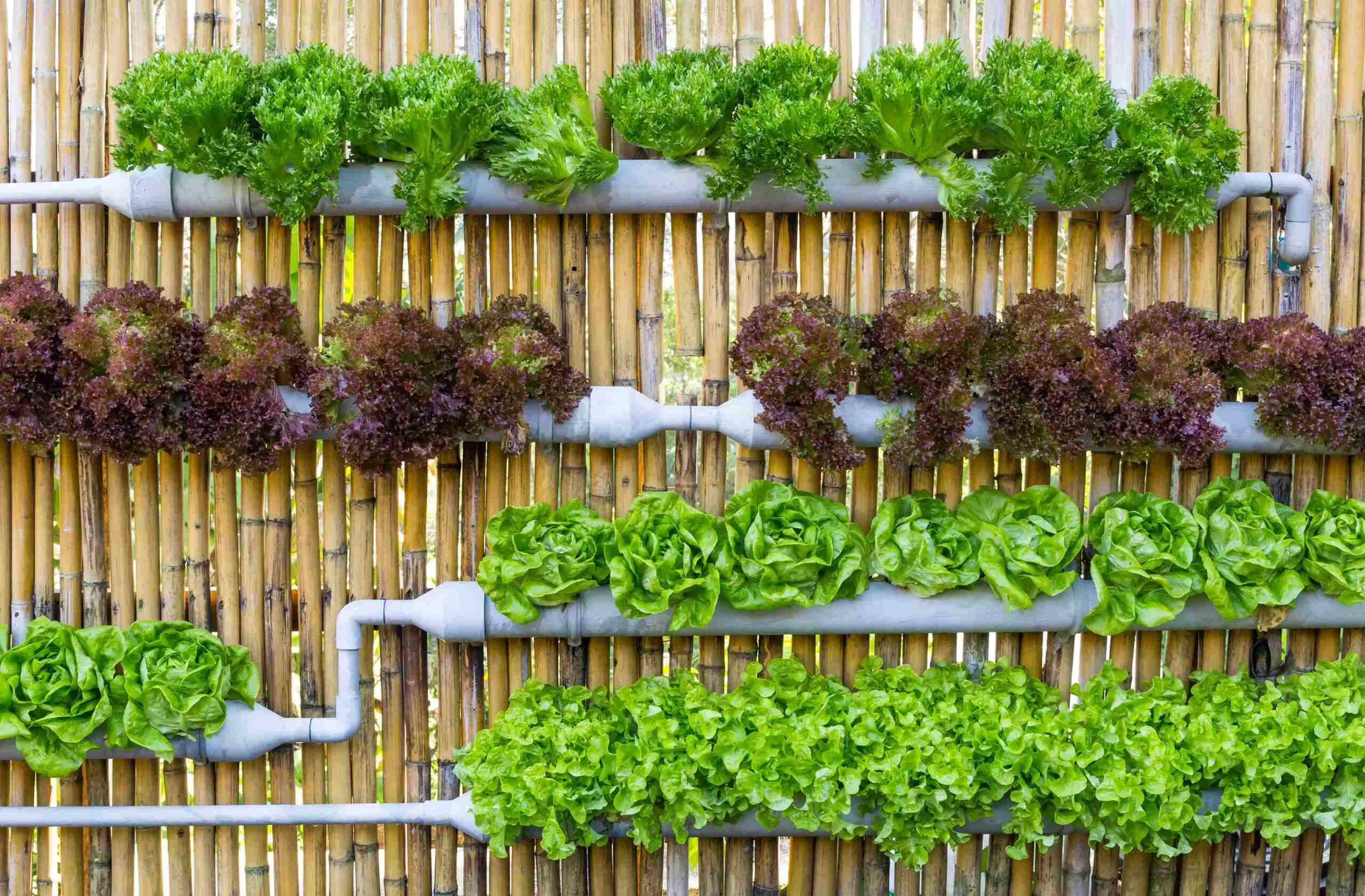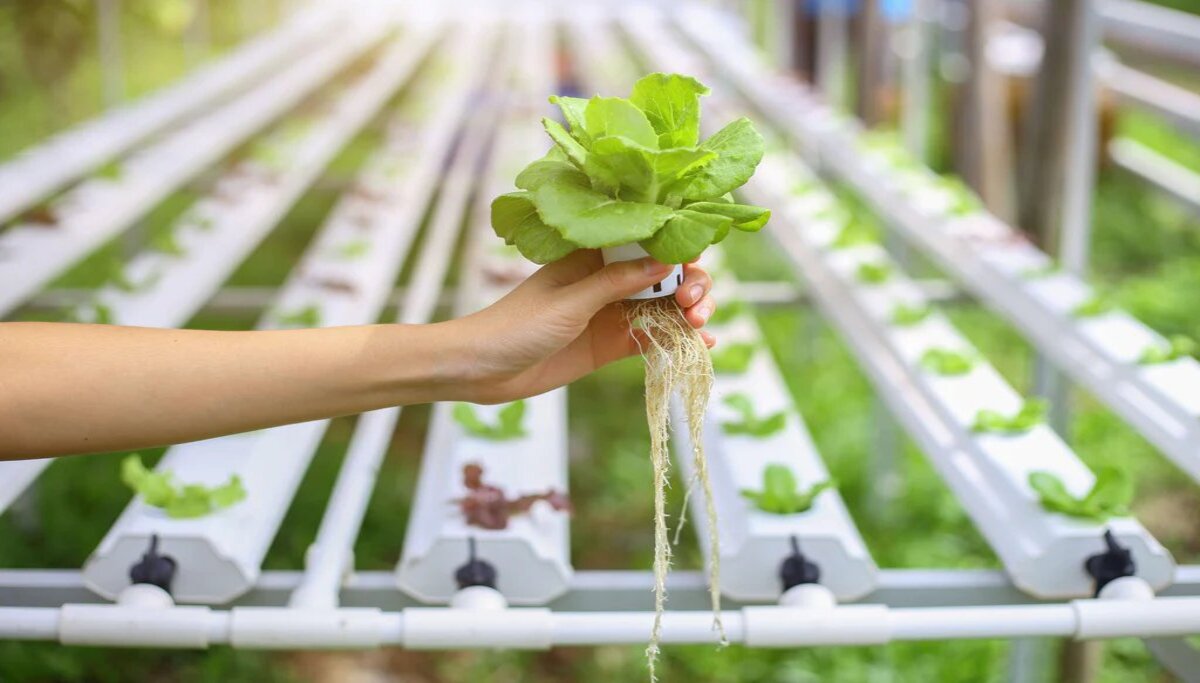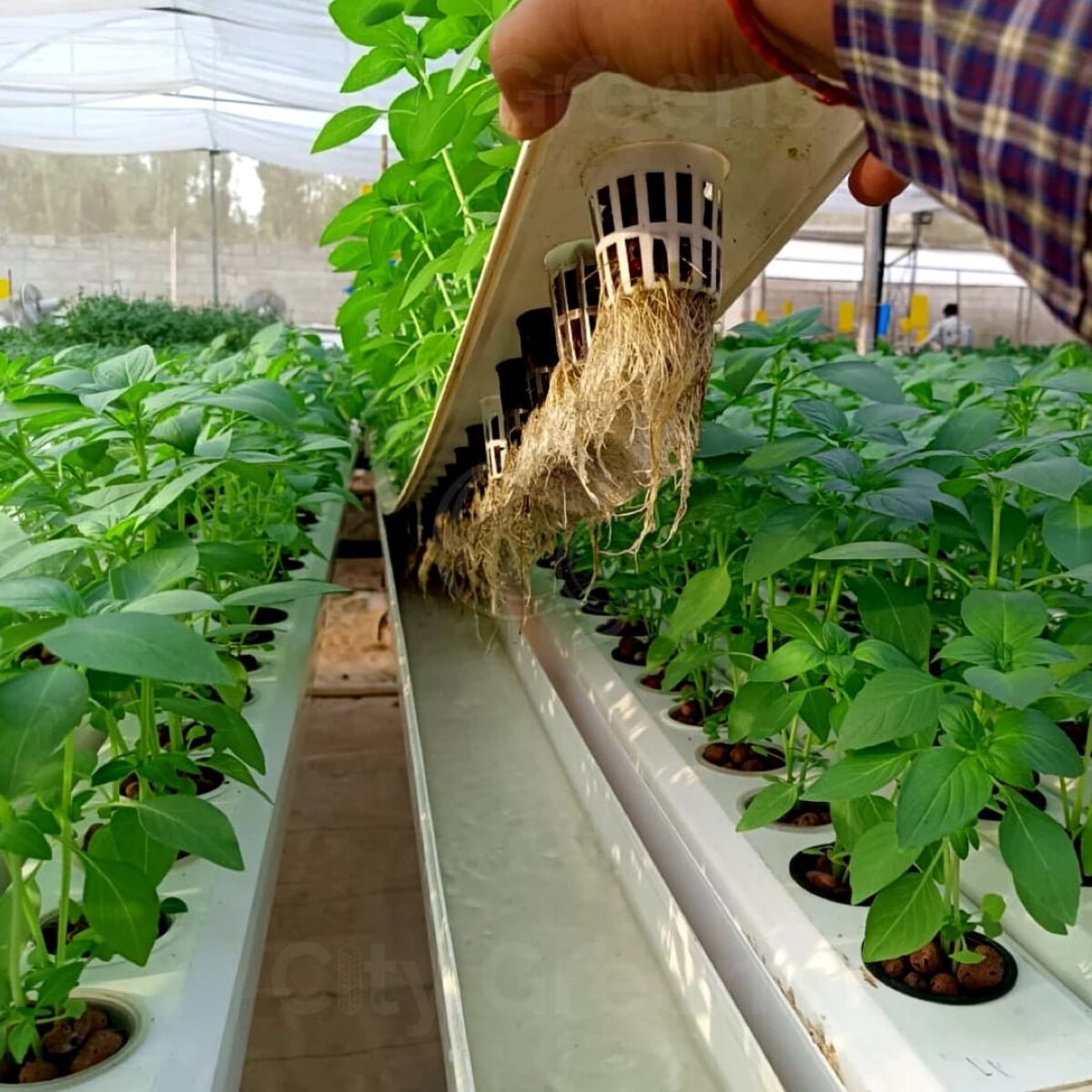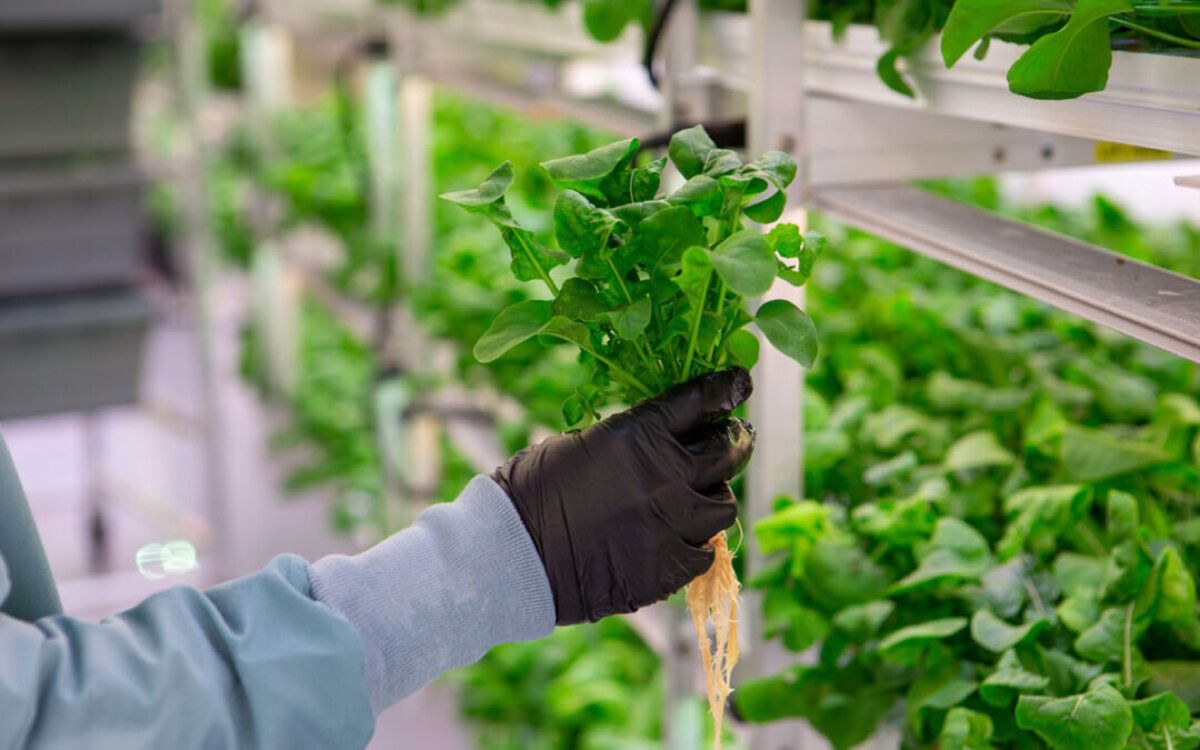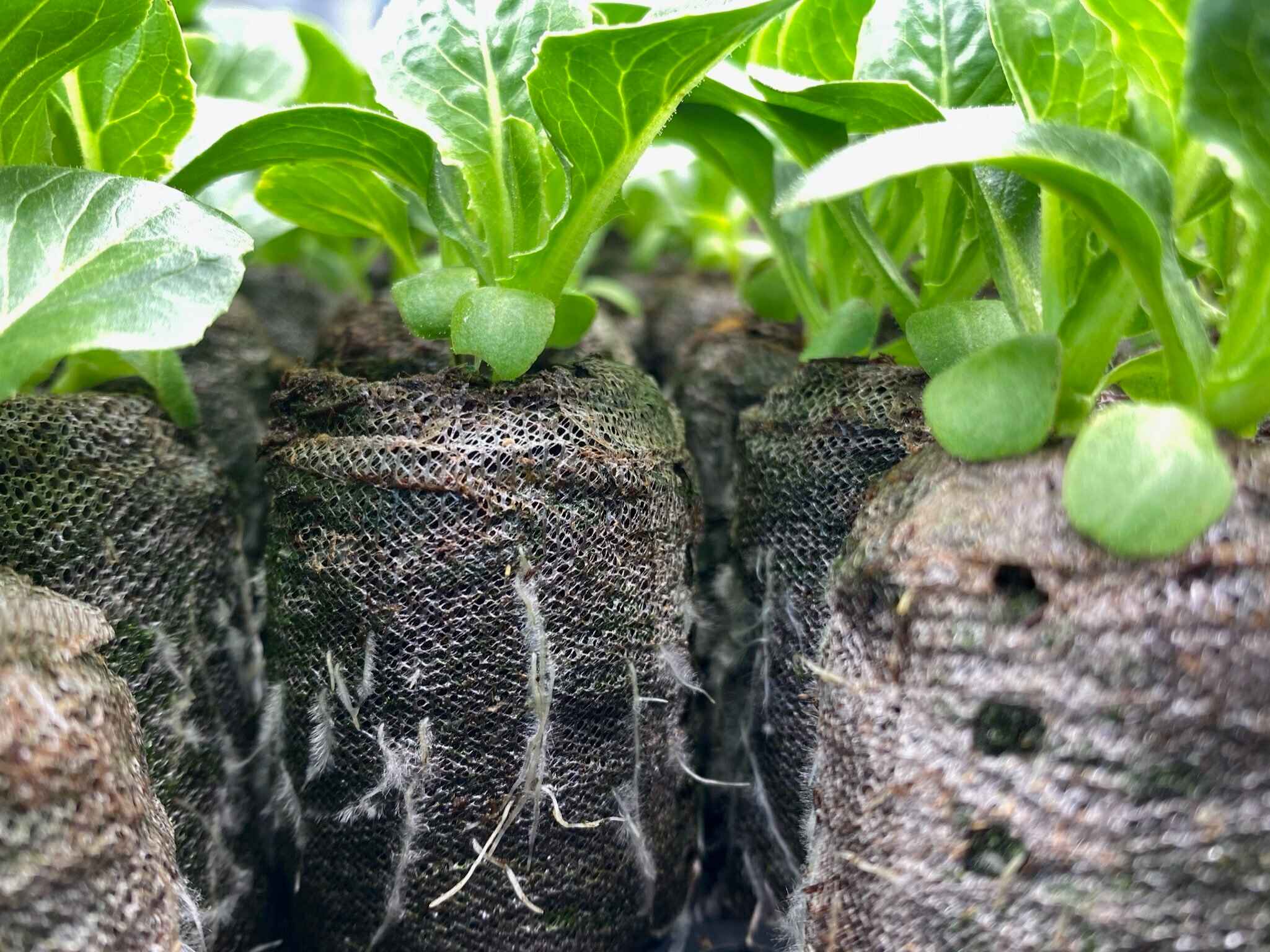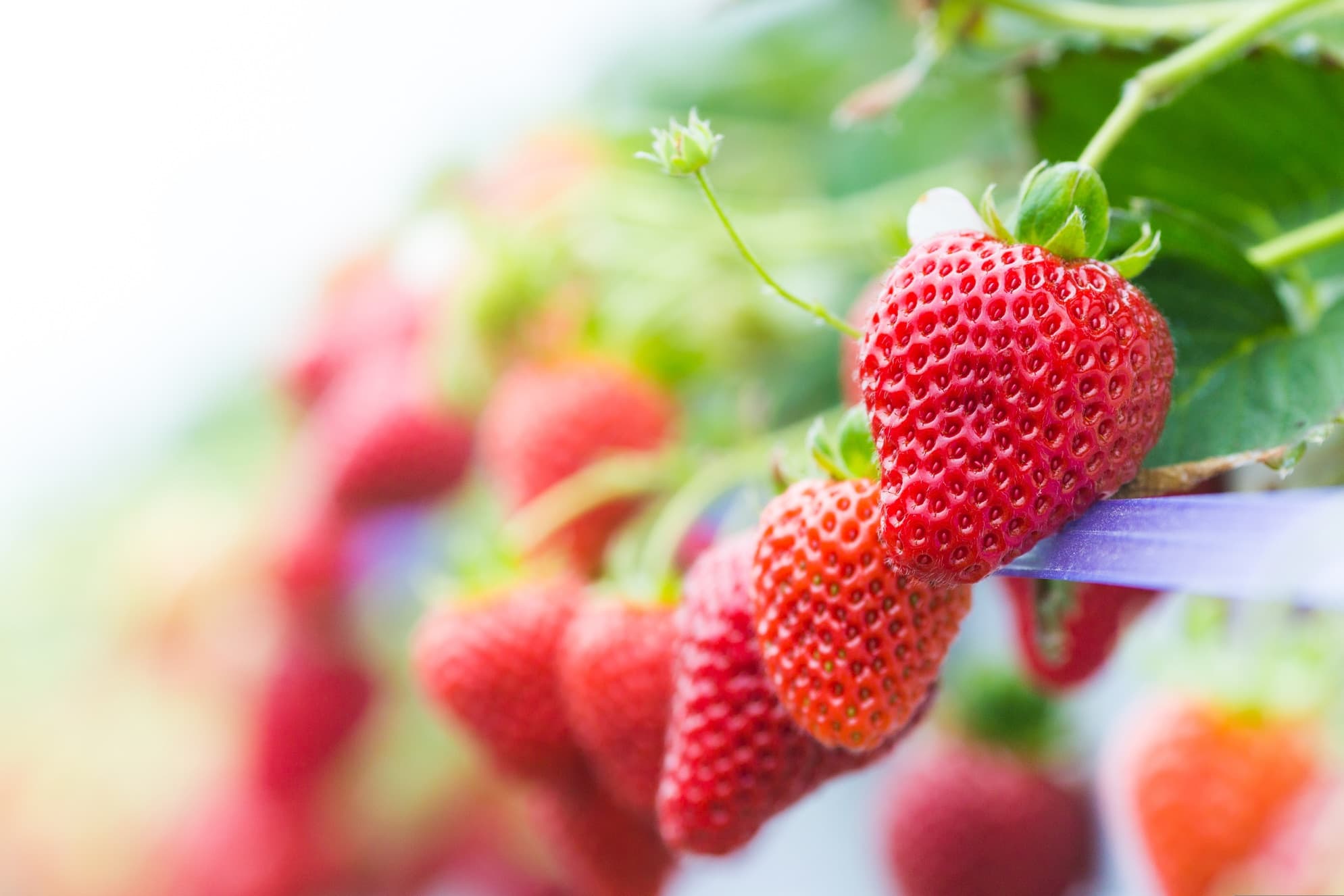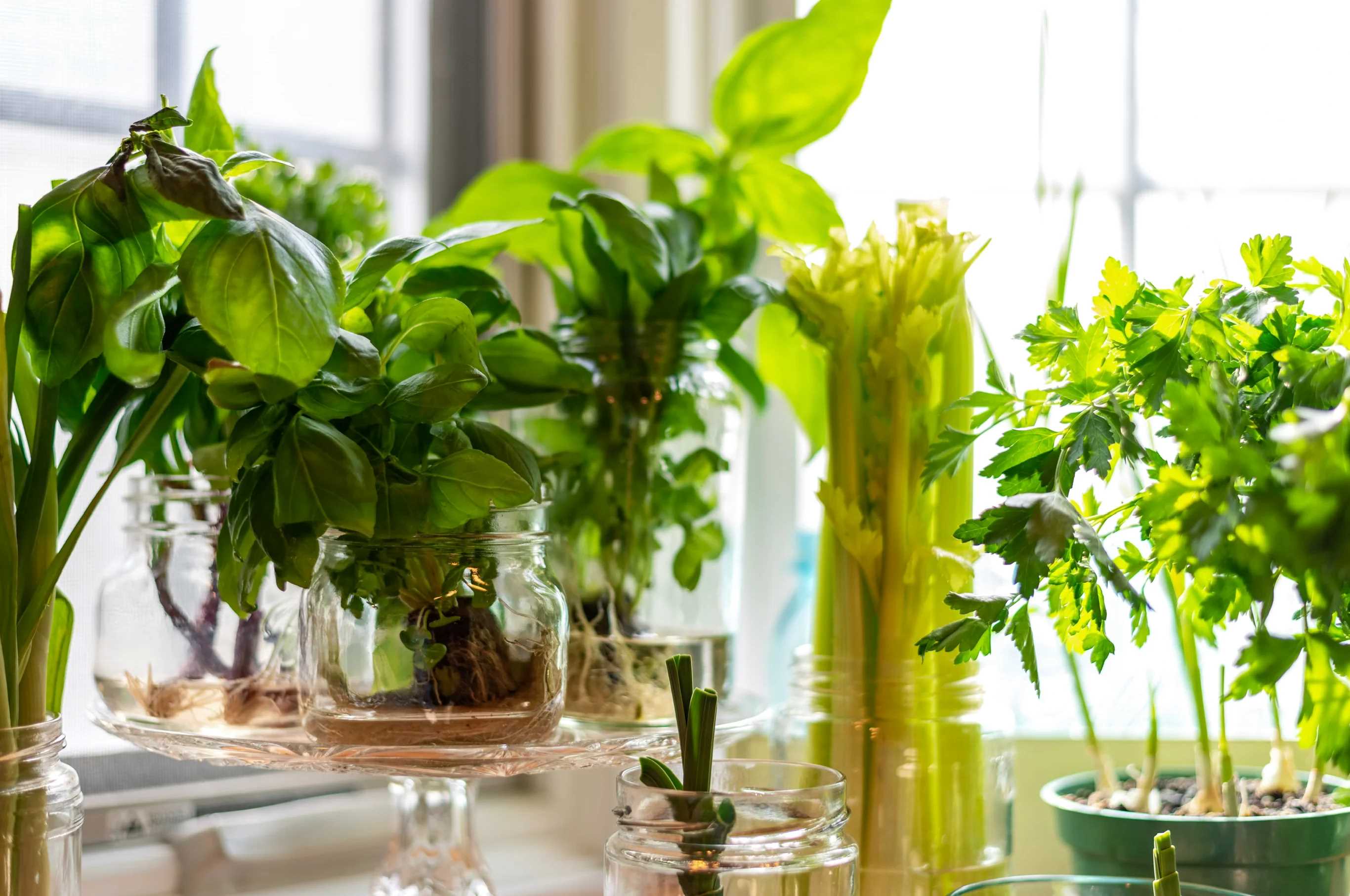Home>Gardening News and Trends>Latest News>When Were Hydroponics Invented
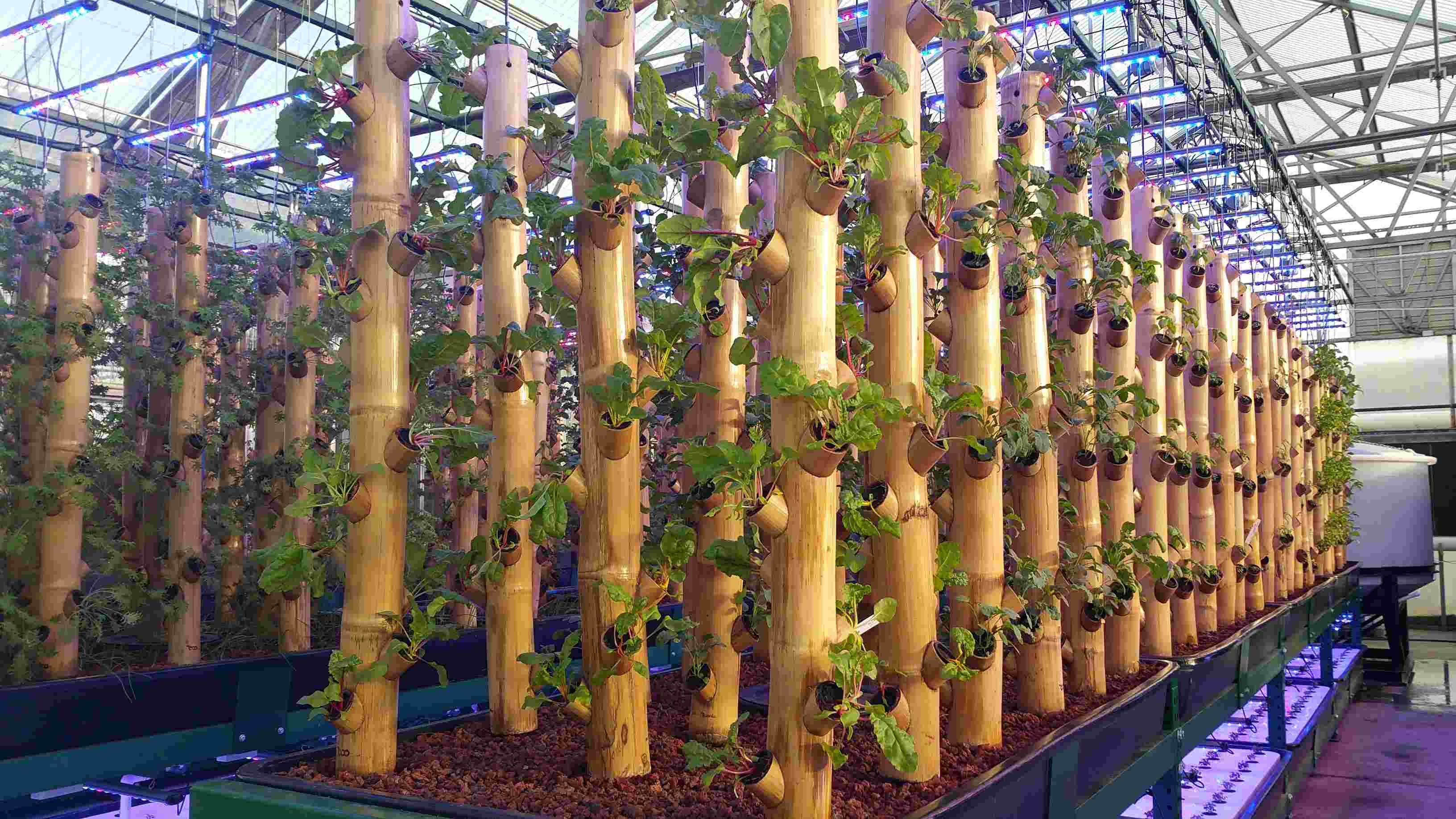

Latest News
When Were Hydroponics Invented
Modified: January 22, 2024
Discover the history of hydroponics and when it was first invented. Stay up to date with the latest news and advancements in this revolutionary gardening technique.
(Many of the links in this article redirect to a specific reviewed product. Your purchase of these products through affiliate links helps to generate commission for Chicagolandgardening.com, at no extra cost. Learn more)
Table of Contents
Introduction
Hydroponics, the practice of growing plants without soil, has revolutionized the way we cultivate crops. This innovative technique, which uses water-based nutrient solutions to provide plants with the essential elements they need, has gained popularity in recent years due to its numerous benefits. From maximizing space utilization to minimizing water usage, hydroponics offers a sustainable and efficient approach to food production. But when exactly was this groundbreaking method invented?
While the history of hydroponics dates back thousands of years, the formal recognition of this technique as a distinct field of study is relatively recent. Over the years, hydroponics has evolved from rustic methods used by ancient civilizations into a modern practice with advanced technologies.
Hydroponics is derived from the Greek words “hydro” meaning water and “ponos” meaning labor. It essentially means growing plants in water. By eliminating the need for soil, hydroponics enables plants to absorb nutrients directly from a nutrient-rich solution, leading to faster growth rates and higher yields.
Ancient cultures such as the Babylonians and Aztecs are believed to have practiced hydroponics in some form. These early civilizations discovered that plants could grow in water with the addition of nutrients, paving the way for the development of modern hydroponics. However, the true origins of hydroponics can be traced back to the ancient Egyptians.
The ancient Egyptians were renowned for their innovative agricultural practices, and it is believed that they experimented with growing plants in water. The famous Hanging Gardens of Babylon are a testament to their mastery of hydroponics. These gardens, one of the Seven Wonders of the Ancient World, were lush green terraces filled with an array of plants, all thriving without soil.
Definition of Hydroponics
Before delving deeper into the history of hydroponics, it is essential to understand what exactly this technique entails. Hydroponics is a method of growing plants without soil, where the plants’ roots are submerged or supported in a water-based nutrient solution. This solution contains all the essential minerals and nutrients necessary for the plants’ growth, eliminating the need for soil as a growing medium.
Hydroponics provides an alternative to traditional soil-based agriculture, offering several advantages. Firstly, it allows for more efficient use of resources, particularly water. In hydroponics, water is reused and circulated within the system, minimizing wastage and reducing the overall water consumption compared to traditional farming methods. Secondly, hydroponics maximizes space utilization as it can be implemented in areas with limited arable land or in urban environments where space is scarce. Vertical farming systems, for example, enable growers to stack multiple layers of crops, effectively increasing the yield per square foot.
Additionally, hydroponics offers greater control over the growing conditions, ensuring optimal nutrition and minimizing the risk of pests and diseases. By providing a controlled environment, growers can optimize factors such as pH levels, temperature, and lighting to suit specific plant requirements. This level of customization allows for year-round cultivation of crops regardless of external climate conditions.
There are several different types of hydroponic systems, each with its unique advantages and applications. Some of the most commonly used systems include:
- Deep Water Culture (DWC): This method involves suspending plants in containers filled with nutrient-rich water, allowing their roots to be fully submerged. Oxygen is provided through the use of air pumps, ensuring proper oxygenation of the roots.
- Nutrient Film Technique (NFT): In this system, a thin film of nutrient solution flows over a sloping surface, with the plant roots taking up the required nutrients. Excess solution is collected and recirculated.
- Drip Irrigation: Here, a slow drip of nutrient solution is provided to each plant, either through a series of tubing or individual emitters. This system is commonly used in commercial hydroponic setups.
- Aeroponics: Aeroponics involves suspending plant roots in the air and misting them with a nutrient solution. This method allows for maximum oxygen exposure to the roots, leading to rapid growth.
The flexibility and versatility of hydroponics make it suitable for a wide range of crops, including vegetables, herbs, flowers, and even certain fruit-bearing plants. As more research and technological advancements continue to enhance the efficiency and sustainability of hydroponic systems, this innovative approach to agriculture shows great potential in meeting the food demands of the future.
Ancient History of Hydroponics
The practice of hydroponics may seem like a modern invention, but its roots can be traced back to ancient civilizations. The concept of growing plants without soil has fascinated humanity for centuries, leading to various experimentation and discoveries throughout history.
One of the earliest records of hydroponics can be found in ancient Babylon, dating back to around 600 BCE. The Babylonians developed a method called “ebonyhiculture” which involved growing plants in beds of gravel or crushed stones. Water enriched with nutrients was regularly supplied, ensuring the plants received the necessary sustenance for growth.
The ancient Aztecs, who inhabited the region that is now Mexico, also had an advanced understanding of hydroponics. They built “floating gardens” known as chinampas, which consisted of man-made islands created by piling mud and vegetation in shallow lakes. These chinampas served as highly productive agricultural spaces, where crops such as maize, beans, and squash were grown hydroponically.
However, it was the hanging gardens of Babylon that truly captivated the imagination of ancient hydroponics. Built by King Nebuchadnezzar II for his wife Queen Amytis, the gardens were an engineering marvel. Water was brought from the Euphrates River to irrigate the terraced gardens, sustaining an array of plants and trees. This legendary example of hydroponics demonstrated that plants could thrive and flourish without being rooted in the earth.
Around the same time, the ancient Egyptians also experimented with hydroponics. They developed a system known as “wogon,” which involved growing plants in baskets filled with nutrient-rich soils placed in water. By submerging the roots, the plants could absorb essential nutrients directly from the water, highlighting the early understanding of hydroponic principles.
These ancient civilizations may not have fully comprehended the scientific principles behind hydroponics, but their experimentation and innovation laid the foundation for modern practices. These early attempts at growing plants without soil demonstrated the potential of hydroponics and set the stage for further advancements in the field.
Roman and Aztec Hydroponics
In addition to the ancient Babylonians and Egyptians, other civilizations such as the Romans and Aztecs also had remarkable advancements in the field of hydroponics.
The Romans, known for their engineering prowess, developed intricate irrigation systems that allowed them to grow crops in arid regions. The use of aqueducts and canals enabled the Romans to transport water directly to agricultural fields, including those dedicated to hydroponic cultivation. They utilized a sophisticated form of hydroponics known as “placination” where plants were placed in porous pots filled with stones and submerged in water. This ingenious method ensured that the plants received a steady supply of water and nutrients, contributing to their prosperous agricultural practices.
Across the Atlantic Ocean, the Aztecs were also pioneers in hydroponics. Living in the midst of the ancient lake system in the Valley of Mexico, they constructed chinampas, artificial islands made by layering mud, organic material, and reeds. These islands served as fertile beds for growing crops hydroponically. The Aztecs utilized the abundant water resources to irrigate the chinampas with nutrient-rich water. The result was highly productive and sustainable agricultural systems that allowed them to support their growing population.
The Aztecs’ understanding of hydroponics extended beyond the chinampas. They implemented a technique known as “nopalera,” which involved growing plants like cactus on rocks or terraces. These plants were highly efficient in water absorption and played a crucial role in managing water resources. The cultivation of cactus in hydroponic systems showcased the Aztecs’ sophisticated knowledge of plant adaptation to various growing conditions.
The innovative hydroponic practices of the Romans and Aztecs highlight their commitment to agricultural advancement and their ability to adapt to challenging environments. These ancient civilizations demonstrated an understanding of the importance of water management and the benefits of growing plants without soil, laying the groundwork for future innovations in hydroponics.
The Hanging Gardens of Babylon
One of the most renowned examples of ancient hydroponics is the Hanging Gardens of Babylon. These gardens, often cited as one of the Seven Wonders of the Ancient World, were an architectural marvel that showcased the advanced knowledge of the ancient Babylonians in horticulture and engineering.
Legend has it that the Hanging Gardens were built in the 6th century BCE by King Nebuchadnezzar II to please his wife, Queen Amytis. The gardens were a lush and verdant oasis located in the heart of the bustling city of Babylon in present-day Iraq.
Contrary to what the name might suggest, the Hanging Gardens were not floating gardens suspended in the air. Instead, they consisted of a series of terraces built on top of each other. The terraces were constructed using a sophisticated system of stone columns and arches, allowing the gardens to rise above ground level.
What made the Hanging Gardens truly remarkable was their ingenious method of irrigation. Water was drawn from the nearby Euphrates River and transported to the gardens through an elaborate system of canals and pipes. The water was then distributed evenly across the multiple levels of the gardens using a gravity-fed irrigation system.
The gardens were richly adorned with a variety of trees, shrubs, and flowering plants. The terraces were covered with exotic flora, creating a spectacle of colors and fragrances. This lush green oasis amidst the arid desert landscape was a testament to the Babylonians’ mastery of hydroponics.
While the exact techniques employed by the Babylonians to sustain the Hanging Gardens remain a subject of debate, it is widely believed that they utilized hydroponic principles. Some theories suggest that the plants were grown in large vases or containers filled with nutrient-rich soil. Water would flow from the irrigation system through the roots of the plants, providing the necessary hydration and nutrients.
The Hanging Gardens of Babylon exemplified the ancient Babylonians’ ingenuity and their ability to create thriving gardens without relying on traditional soil-based methods. Today, although the Hanging Gardens no longer exist, they continue to inspire awe and serve as a testament to the achievements of ancient civilizations in the realm of hydroponics.
Renaissance and Enlightenment Era
The Renaissance and Enlightenment period marked a resurgence of interest in scientific exploration and experimentation. During this time, scholars and thinkers began to question traditional agricultural practices and explore alternative methods of cultivation. This era witnessed significant contributions to the field of hydroponics, as scientists and intellectuals sought to understand and refine the art of growing plants without soil.
One notable figure from this period is Sir Francis Bacon, an English philosopher and scientist. Bacon was fascinated by the idea of growing plants hydroponically and conducted several experiments to investigate its feasibility. In his writings, he advocated for the adoption of hydroponics as a sustainable and efficient method of food production.
The Enlightenment era also saw advancements in the understanding of plant nutrition and the importance of mineral elements for plant growth. Scientists like Jan Ingenhousz and Julius von Sachs conducted experiments and made significant discoveries related to plant physiology, which contributed to the understanding of how plants obtain nutrients.
It was during this time that the concept of nutrient solutions gained recognition. Scientists began to explore the various nutrients necessary for plant growth and experimented with developing nutrient-rich solutions that could be used in hydroponic systems. This understanding of plant nutrition laid the groundwork for the development of more advanced hydroponic techniques in the future.
Additionally, the advent of better irrigation systems and advancements in glassmaking allowed for the construction of greenhouses. These enclosed structures provided controlled environments for plant growth and further facilitated the practice of hydroponics. The ability to manipulate and optimize environmental factors such as temperature, humidity, and light in greenhouses allowed for year-round cultivation and significantly expanded the possibilities of hydroponic agriculture.
During the Renaissance and Enlightenment era, the interest in hydroponics as a scientific endeavor grew. Scholars and researchers began to see the potential of this method for improving agricultural practices, enhancing food production, and addressing the challenges of feeding growing populations.
While the progress during this period was significant, it laid the groundwork for further advancements in hydroponic technology and techniques that would come in future centuries.
Modernization of Hydroponics
The modernization of hydroponics can be attributed to advancements in technology, scientific research, and a growing need for sustainable and efficient agricultural practices. Over the years, hydroponics has evolved from a niche and experimental method to a mainstream technique used in various sectors of agriculture.
One significant factor in the modernization of hydroponics is the development of advanced systems and technologies. From simple DIY setups to sophisticated commercial systems, hydroponic methods have become more accessible and efficient. Automation and computerized controls are now integrated into hydroponic systems, enabling precise monitoring and adjustment of environmental parameters. These technological innovations have increased the efficiency, productivity, and consistency of hydroponic crop production.
Scientific research has also played a crucial role in the modernization of hydroponics. Studies have focused on optimizing nutrient formulations, improving plant nutrient uptake, and developing innovative growing techniques. This research has led to the development of specialized nutrient blends tailored to specific plant species, resulting in enhanced growth and yields.
Another significant factor in the modernization of hydroponics is the growing demand for locally sourced and sustainable food. As urbanization increases and available arable land diminishes, hydroponics offers a solution to produce fresh produce in urban areas and areas with limited space. Vertical farming, rooftop gardens, and hydroponic container farms have become popular ways to bring food production closer to urban populations.
Hydroponics’ potential for reducing water usage has also contributed to its modernization. With water scarcity becoming a global concern, hydroponics allows for the recycling and conservation of water resources. Systems like the nutrient film technique (NFT) and deep water culture (DWC) have been refined to maximize water efficiency while still providing optimal hydration and nutrition to the plants.
The integration of hydroponics in commercial farming has also driven its modernization. Large-scale hydroponic farms have emerged, utilizing advanced technologies and cultivation methods to produce high-quality crops year-round. These commercial operations not only provide fresh produce to consumers but also contribute to the development of best practices and advancements in hydroponics.
Furthermore, hydroponics has found applications beyond traditional agriculture. It has been adopted by researchers, botanists, and scientists working on space exploration projects. The controlled environments and efficient resource utilization of hydroponics make it an ideal method for growing food in space stations and on future manned missions to other planets.
In summary, the modernization of hydroponics has been driven by technological advancements, scientific research, sustainability concerns, and the need to maximize food production in limited spaces. As hydroponics continues to evolve, it holds great promise for improving food security, sustaining urban agriculture, and meeting the challenges of a rapidly changing world.
Contributions of NASA and the Space Age
The advancements in hydroponics owe much to the pioneering work of NASA and the space programs of various nations. The unique challenges of growing food in space environments with limited resources have led to groundbreaking innovations in hydroponic technology and techniques.
NASA’s interest in hydroponics emerged during the early days of the space race. The agency recognized that traditional methods of food production would not be feasible for long-duration space missions. The need for a sustainable and efficient way to grow food in a microgravity environment led to extensive research and experimentation in hydroponics.
One of the notable contributions of NASA was the development of the plant growth experiments on the Space Shuttle program in the 1980s and 1990s. These experiments involved growing plants in specially designed hydroponic systems to study their growth patterns and physiological responses to microgravity. As a result, significant insights were gained into the adaptability of plants to space conditions and the optimization of hydroponic systems for space cultivation.
With the advent of the International Space Station (ISS), NASA further advanced hydroponics by implementing the Veggie plant growth system. This system utilizes LED lighting and a specialized hydroponic design to provide astronauts with fresh produce during their missions. Through ongoing experimentation on the ISS, NASA continues to refine hydroponics for space missions and contributes to our understanding of plant biology and cultivation techniques.
Besides NASA, other space agencies and organizations have also made notable contributions to hydroponics and space agriculture. The European Space Agency (ESA) developed the Advanced Closed Loop System (ALS), an innovative hydroponic system that efficiently recycles water and nutrients. The ALS was successfully tested on the International Space Station and demonstrated the viability of using hydroponics for sustainable and long-duration space missions.
The advancements made in hydroponics for space applications have had a significant impact on terrestrial agriculture as well. The technology developed for space-growing systems has found its way into vertical farms, indoor cultivation facilities, and other controlled-environment agriculture settings. Hydroponic techniques and designs refined for space have been adapted and scaled down for commercial and small-scale use on Earth, contributing to the growth of the urban farming movement and sustainable food production practices.
The contributions of NASA and the space age to hydroponics have accelerated the modernization of this agricultural technique. By pushing the boundaries of plant cultivation in space, researchers and scientists have gained invaluable knowledge and technological advancements that have far-reaching implications for agriculture on Earth.
Commercialization of Hydroponics
Hydroponics, once considered a niche and experimental method of agriculture, has now become a thriving industry. The commercialization of hydroponics has gained momentum in recent years, driven by increasing demand for locally sourced, fresh produce, and a growing interest in sustainable farming practices.
One of the key drivers of the commercialization of hydroponics is the rising awareness of the environmental impact of traditional agriculture. Concerns about land degradation, water scarcity, and the use of pesticides and fertilizers have led consumers and businesses to seek out more sustainable alternatives. Hydroponics, with its reduced water usage, minimal use of chemical inputs, and ability to grow crops in controlled environments, has emerged as a viable solution.
Hydroponics farms are now found in various settings, including urban areas, deserts, and regions with adverse weather conditions. Vertical farming, in particular, has gained popularity due to its ability to maximize space utilization and crop yields. These types of high-density hydroponic systems rely on artificial lighting and precise environmental controls to provide optimal growing conditions for plants.
The commercial hydroponics industry encompasses a wide range of crops, including leafy greens, herbs, strawberries, tomatoes, and even high-value specialty crops. With advancements in hydroponic technology, growers can tailor nutrient solutions and environmental conditions to suit the specific needs of different crops, resulting in superior quality and higher yields.
Hydroponics has also extended its reach to community-supported agriculture (CSA) programs and local farmers’ markets. Many small-scale growers have embraced hydroponics as a way to provide fresh, locally grown produce to their communities year-round. Hydroponic systems can be designed to fit various space constraints and budgets, making it accessible to a wide range of growers.
Furthermore, the commercialization of hydroponics has led to the development of specialized equipment and supplies to support the industry. Companies now offer a broad range of hydroponic systems, nutrient solutions, growing media, and monitoring tools to meet the specific needs of growers. This support infrastructure has further facilitated the adoption of hydroponics on a larger scale.
The market demand for hydroponically grown produce continues to grow, driven by factors such as the desire for fresh, pesticide-free food, increasing urbanization, and the demand for locally sourced products. Restaurants, grocery stores, and consumers are increasingly recognizing the benefits of hydroponically grown produce, leading to a greater market share for hydroponic growers.
In addition, hydroponics has opened up new opportunities for entrepreneurship and innovation. Startups and technology companies are investing in research and development to improve system efficiency, develop smart monitoring and automation solutions, and explore sustainable practices such as using renewable energy sources.
The commercialization of hydroponics has transformed it from a novel concept into a viable and economically sustainable industry. This shift has not only provided consumers with access to fresh, nutrient-rich produce year-round but has also contributed to the development of more sustainable and efficient agricultural practices.
